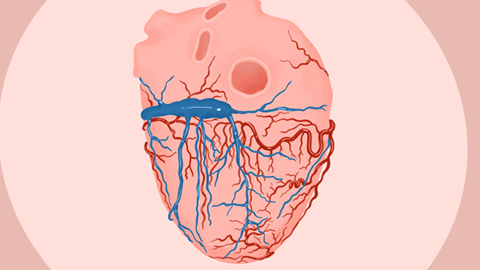What to do about blocked leg blood vessels
Under normal circumstances, lower limb vascular blockage may be caused by factors such as decreased vascular elasticity due to aging, prolonged sitting or standing, deep vein thrombosis of the lower extremities, atherosclerosis, and acute arterial embolism. It is recommended to seek timely medical attention, identify the underlying cause, and improve the condition under a doctor's guidance through general treatment, medication, surgical treatment, and other methods. A specific analysis is as follows:

1. Decreased vascular elasticity due to aging: As people age, blood vessel wall elasticity gradually weakens, blood flow slows down, and blood stasis is more likely to occur, leading to blockage. Appropriate walking and ankle pump exercises can help promote lower limb blood circulation. Diet should be low in fat and salt, with increased intake of vegetables and fruits rich in dietary fiber.
2. Prolonged sitting or standing: Maintaining the same posture for long periods hinders venous return in the lower limbs, increasing blood viscosity, which can easily lead to vascular blockage. This is commonly seen in office workers, teachers, and others with similar lifestyles. It is recommended to move around for 5-10 minutes every hour spent sitting or standing, stretch the lower limb muscles, elevate the lower limbs during rest, and wear medical compression stockings if necessary to assist venous return.
3. Deep vein thrombosis of the lower extremities: Blood clots form inside the veins, blocking the vessel and causing symptoms such as swelling and pain in the lower limbs. This often relates to postoperative bed rest and reduced physical activity. Patients should follow medical advice to take anticoagulant medications such as warfarin sodium tablets, rivaroxaban tablets, and dabigatran etexilate capsules. While resting in bed, the affected limb should be elevated, and pressure on the lower limbs should be avoided to prevent thrombus dislodgement.
4. Atherosclerosis: Lipids deposit on the arterial walls forming plaques, causing narrowing or even complete blockage of the vessel lumen, leading to lower limb ischemia. Symptoms include intermittent claudication and coldness in the lower limbs. Patients should follow medical advice to use lipid-lowering and antiplatelet medications such as atorvastatin calcium tablets, rosuvastatin calcium tablets, and aspirin enteric-coated tablets. Blood pressure and glucose levels should be controlled, and high-fat and high-sugar foods should be avoided in the diet.
5. Acute arterial embolism: A sudden blockage of the lower limb artery by a thrombus or other embolus causes acute limb ischemia, presenting as severe pain, pale skin, and numbness. Emergency arterial thrombectomy is required to remove the embolus surgically and restore blood flow. Anticoagulant medications should be continued after surgery to prevent recurrent embolism.
In daily life, it is important to develop the habit of regular vascular checkups, maintain a healthy weight to avoid obesity加重 vascular burden, quit smoking and limit alcohol consumption to reduce vascular damage factors. Keep a regular schedule and avoid excessive fatigue to help maintain healthy lower limb circulation.






